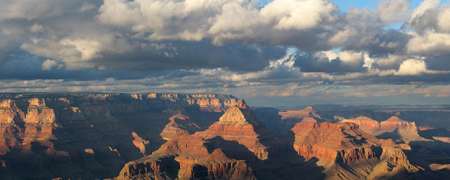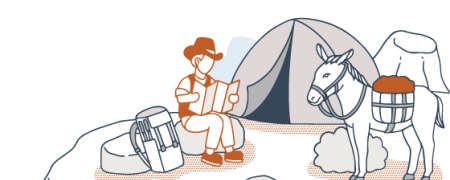Grand Canyon Havasupai Tribe
The Havasupai are the most eastern of the fourteen Pai tribal subgroups and 1 of 6 major Grand Canyon Tribes. Pai, meaning "people," refers to the three major bands of upland Yumans, who speak different dialects of the same Hokan language. The Pai people traditionally lived in Northern Arizona and inhabited land along the Colorado River, from Grand Canyon to the Bill Williams River. Each band numbered from 85 to 250 individuals and considered themselves their own distinct group within the three major groups: Yavapai, Hualapai and Havasupai. Havasupai is a Yuman word, given to them by their Pai brethren, the Hualapai. The Hopi knew them as Coconino, or "wood killers," referring to the way the Havasupai broke branches off trees with clubs to build fires.
For most of time, the Havasupai were nomads who farmed alongside perennial streams in the summer and hunted and gathered in the winter. During the summer they built wickiups, brush and mud-covered shelters, at the bottom of Havasu Canyon. There they irrigated crops of squash, corn, beans, calabashes, sunflower seeds, melons, peaches, and apricots. They also gathered wild native plants such as agave, grass seeds and pinon nuts. In the winter they moved up to the plateau and found shelter in wickiups and caves, where they subsisted on wild plants and hunted deer and small game, and on occasion, mountain sheep and black bear. Chieftainship was hereditary, the people choosing which male family member of the chief should succeed him. The Havasupai had a patriarchal and polygamous society. The number of wives a man held was dependent upon his ability to support his extended families. The Havasupai are also unique because of their close affiliation with the Hopi, with whom they were closer than their own Yuman kin. From the Hopi, the Havasupai acquired basket making skills and techniques for food preparation. The Havasupai primarily bartered baskets and deerskin, which they also used for dress. The Havasupai believe in the same creation legends as the Yuma and Mohave Tribes. Many modern Havasupai have accepted Christianity but still abide by ancient traditions and prayers as well. They firmly believe in the sanctity of the land and their relationship with it.
In the late 1800's, cowboys and miners came to Havasu Canyon and began staking claims. Tensions escalated until 1866, when a three-year war broke out between the Pai people and the US Army. The Havasupai did not fight, and thus were considered to be a separate band. In 1880, President Hayes restricted the Havasupai to 38,000 acres along Havasu Creek, which was reduced to a mere 500 acres in 1882. Grand Canyon National Park was established in 1919 and, at that time, the Tribe was restricted to a reservation outside the southwest corner of the park. 185,000 acres have since been returned to them, resulting from strenuous legal battles commencing in the early 1970's.
You can learn more about the Havasupai by visiting the official website of the Havasupai Tribe.





